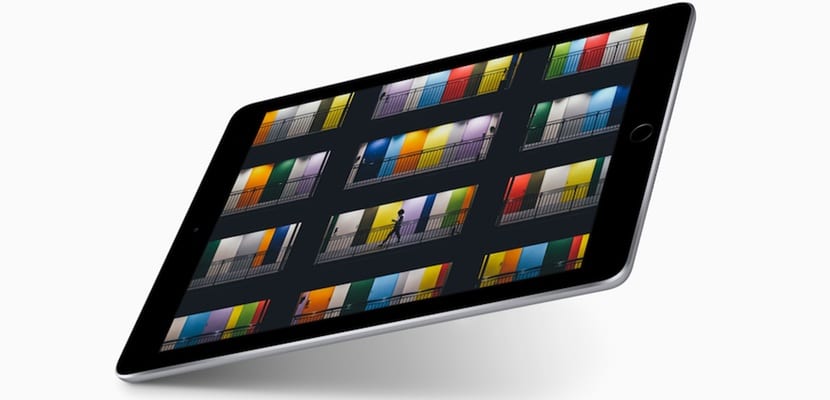
The new iPad 2017 shares many similarities with the iPad Air 1, such as dimensions and weight, but with more modern internal components, some already present in the iPad Air 2 and others more recent such as the A9 processor found in the iPhone 6s, 6s Plus and iPhone SE. But one of the doubts that we had to know was its screen, since Apple abandoned the integral lamination to return to an older technology. How does this screen behave? Is it a lag compared to the screen of the iPad Air 2? iFixit has tested it and the conclusion is that it improves the screen of the iPad Air 1 and the iPad Air 2.
The transition from iPad Air 1 to 2 meant a new screen that, although it maintained the same resolution, had "integral lamination", that is, between the glass and the screen itself there was no space, they were literally glued together. Until that moment, only iPhones had this feature, and from that moment on, all iPads had that type of screen. Among the advantages that this technology includes is not having so many reflections and a better visualization of the screen, thanks to the fact that there is no air between it and the front glass.. That is why many were disappointed to see that the new iPad did not have that technology, nor the anti-reflective coating. Go back to the iPad Air 1 screen in 2017?

The reality is that this new technology of the iPad Air 2 had a big drawback, and that is that the performance of the screen was lower than that of its predecessor, the iPad Air 1. According to Displaymate experts exactly 8% lower brightness and up to 16% lower energy efficiency compared to the original iPad Air screen. Yes, we won with less reflections but we lost in energy efficiency and brightness.
The iPad 2017, despite the initial disappointment, seems to show a better performance according to iFixit than the iPad Air 1, with 44% more brightness.. If we add to this that the iPad Air 2 had 85 less brightness than the Air 1, it seems clear that the iPad 2017 can be approximately 50% brighter than the iPad Air 2. Yes, that has a price and is that at use it in situations that cause reflections on the screen (outdoors for example) we will see it worse than the iPad Air 2. In addition, everything indicates that it will be a more efficient screen in battery consumption than that of the Air 2, so it seems that after Everything seems that the decision to use this type of screen on an iPad seems right, especially if we do not forget that it is the cheapest of the entire range.
Good information, but I think the comparison of this ipad with the ipad pro was very pertinent.
They play in different categories. Anyway we will have the opportunity to compare them and we will tell you about it.
The headline conveys an incongruous conclusion with the information incorporated in the body of the message, since it is not at all clear that finally the loss of the properties of the integral lamination and of the anti-reflective film are compensated by the increase in brightness in the image result. obtained.
"It seems" that you have to be careful with repetitions: "so it seems that after all it seems that the decision to use this type of screen on an iPad seems right".
Jokes aside, I prefer not to have reflections and more sharpness to have more brightness. I always use it indoors. Long live the Air 2.
Even outdoors it is doubtful that the increase in brightness compensates for the elimination of reflections. But the integral lost lamination, as the same article acknowledges, implied other benefits in image quality, related to the minimization of space between the emission panel and the contact surface.